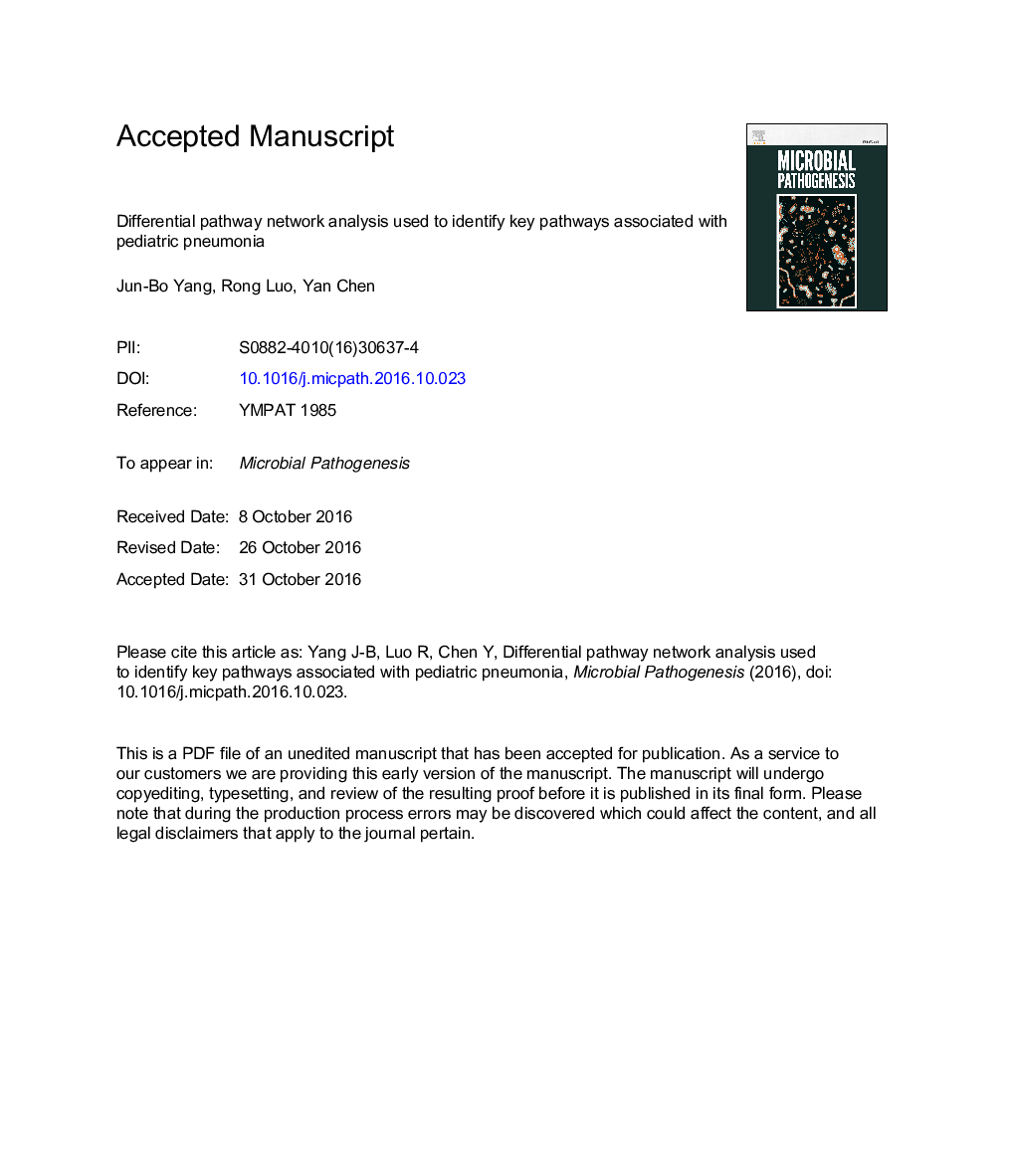| Article ID | Journal | Published Year | Pages | File Type |
|---|---|---|---|---|
| 5674089 | Microbial Pathogenesis | 2016 | 21 Pages |
Abstract
We aimed to identify key pathways to further explore the molecular mechanism underlying pediatric pneumonia using differential pathway network which integrated protein-protein interactions (PPI) data and pathway information. PPI data and pathway information were obtained from STRING and Reactome database, respectively. Next, pathway interactions were identified on the basis of constructing gene-gene interactions randomly, and a weight value computed using Spearman correlation coefficient was assigned to each pathway-pathway interaction, thereby to further detect differential pathway interactions. Subsequently, construction of differential pathway network was implemented using Cytoscope, following by network clustering analysis using ClusterONE. Finally, topological analysis for differential pathway network was performed to identify hub pathway which had top 5% degree distribution. Significantly, 901 pathways were identified to construct pathway interactions. After discarding the pathway interactions with weight value < 1.2, a differential pathway network was constructed, which contained 499 interactions and 347 pathways. Topological analysis showed 17 hub pathways (FGFR1 fusion mutants, molecules associated with elastic fibres, FGFR1 mutant receptor activation, and so on) were identified. Significantly, signaling by FGFR1 fusion mutants and FGFR1 mutant receptor activation simultaneously appeared in two clusters. Molecules associated with elastic fibres existed in one cluster. Accordingly, differential pathway network method might serve as a predictive tool to help us to further understand the development of pediatric pneumonia. FGFR1 fusion mutants, FGFR1 mutant receptor activation, and molecules associated with elastic fibres might play important roles in the progression of pediatric pneumonia.
Related Topics
Life Sciences
Immunology and Microbiology
Microbiology
Authors
Jun-Bo Yang, Rong Luo, Yan Yan, Yan Chen,
